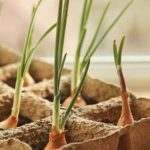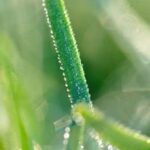Dealing with the invasion of Zoysia grass in vegetable gardens can be a frustrating and time-consuming task for many gardeners. The presence of this unwanted grass can hinder the growth and development of essential vegetable plants, making it crucial to address the issue promptly. As such, understanding how to get rid of Zoysia grass in vegetable gardens is essential for maintaining a healthy and thriving garden.
Zoysia grass, known for its dense growth pattern and resilience, often presents a challenge when it infiltrates vegetable gardens. Its ability to compete with vegetables for vital resources such as nutrients, water, and sunlight can significantly impact the overall health and yield of the crops. As a result, it becomes imperative for gardeners to recognize and effectively eliminate this intruder from their garden space.
In this comprehensive guide, we will discuss various methods for identifying Zoysia grass, the potential risks it poses to vegetable gardens, and practical strategies for removal. Additionally, we will explore preventative measures and alternative ground cover options to ensure that your vegetable garden remains free from the encroachment of Zoysia grass.
Identifying Zoysia Grass
Zoysia grass can be identified by its fine texture, dense growth and aggressive spreading via thick rhizomes. Its leaves are sharply pointed at the tip and have a distinct light green color.
Zoysia grass is known to aggressively take over areas where it has been planted, making it difficult to eradicate from vegetable gardens once established. It’s important for gardeners to be able to properly identify Zoysia grass in order to effectively control its growth and prevent it from overtaking their vegetable crops.
One of the key characteristics of Zoysia grass is its aggressive spreading through underground rhizomes. These rhizomes can quickly spread into surrounding areas of your vegetable garden, causing significant damage to your vegetable plants as they compete for nutrients, water, and sunlight. Additionally, identifying Zoysia grass from other types of grass in your garden is crucial in order to implement specific removal techniques that are effective against this particular species.
In order to distinguish Zoysia grass from other varieties of grass in your garden, you can look for its characteristic traits such as its fine texture, dense growth pattern, and sharp-pointed leaves. Understanding how to identify Zoysia grass will enable you to take the necessary steps for manual or chemical removal as well as implementing preventive measures to keep your vegetable garden free from this invasive species.
| Characteristics | Identification |
|---|---|
| Fine texture | Easily noticeable among coarser grass varieties |
| Dense growth pattern | Crowds out other plant species |
| Sharp-pointed leaves | Distinctive feature compared to other common grass types in gardens |
Risks of Zoysia Grass in Vegetable Gardens
Zoysia grass, while a hardy and attractive option for lawns, can quickly become a nuisance when it invades vegetable gardens. Its aggressive growth habit allows it to spread rapidly, posing a serious threat to the health and productivity of your vegetable plants. Identifying the risks associated with Zoysia grass in your garden is essential in order to take proactive measures to address the problem.
Negative effects of Zoysia grass in vegetable gardens include:
- Competition for nutrients: Zoysia grass competes with vegetable plants for essential nutrients present in the soil, leading to stunted growth and reduced yield.
- Water competition: As a drought-tolerant grass species, Zoysia can outcompete vegetables for water, leaving them more susceptible to stress and wilting.
- Sunlight blockage: The dense growth habit of Zoysia grass can shade out vegetable plants, reducing their access to sunlight and hindering their photosynthesis process.
Given these risks, it becomes evident that addressing the presence of Zoysia grass in your vegetable garden is crucial for maintaining its health and productivity.
To effectively mitigate the negative impact of Zoysia grass on your vegetables, it is imperative to implement appropriate eradication methods while also taking preventative measures against re-growth. By understanding these risks and taking necessary actions, you can ensure that your vegetable garden remains free from the detrimental effects of Zoysia grass.
Manual Removal Techniques
When it comes to getting rid of Zoysia grass in vegetable gardens, manual removal techniques can be an effective method. This approach is ideal for those who prefer not to use chemicals and herbicides on their edible garden plants.
Step-by-Step Guide
To manually remove Zoysia grass from your vegetable garden, start by using a sharp spade or shovel to dig up the grass and its root system. Be sure to dig deep enough to remove the entire root system to prevent regrowth. Once the grass is removed, carefully sift through the soil to ensure no underground runners are left behind.
Tools and Equipment
The tools needed for manual removal include a hand shovel, garden hoe, weed pulling tool, and gloves. It’s essential to wear gloves when manually removing Zoysia grass from the vegetable garden to protect your hands from potential cuts or scrapes.
Maintenance
After manual removal, it’s important to keep an eye on the garden for any signs of Zoysia grass returning. Regular maintenance such as mulching with organic materials or hand weeding can help prevent the re-establishment of unwanted grass. Consistent vigilance will be necessary to keep the vegetable garden free from Zoysia grass.
Chemical Removal Options
When manual removal techniques are not enough to get rid of Zoysia grass in your vegetable garden, using safe herbicides and chemicals can be an effective solution. Here are some options for chemical removal:
- Selective Herbicides: Look for herbicides specifically designed to target Zoysia grass while leaving your vegetable plants unharmed. These selective herbicides are formulated to kill the unwanted grass without affecting the surrounding plants.
- Non-Selective Herbicides: If you need a more aggressive approach, non-selective herbicides can be used to eliminate Zoysia grass along with any other vegetation it’s intertwined with. Just be cautious as these herbicides can harm your vegetables if not applied carefully.
Before applying any chemicals to your garden, it’s crucial to take some precautions and safety measures:
- Read the labels and instructions on the herbicide or chemical container carefully before use.
- Wear protective clothing, gloves, and eyewear to shield yourself from exposure to the chemicals.
- Avoid applying herbicides on windy days to prevent drift onto your vegetable plants or neighboring areas.
By following these guidelines, you can effectively address Zoysia grass infestation in your vegetable garden while keeping your crops safe from harm. Remember that chemical removal should always be a last resort and used sparingly to protect the overall health of your garden ecosystem.
Preventing Zoysia Grass Re-Growth
Vegetable Garden Maintenance
To prevent Zoysia grass from re-growing in the vegetable garden, it is important to stay on top of regular maintenance tasks. This includes regularly tilling the soil to disrupt Zoysia grass roots and prevent them from establishing a strong foothold. Additionally, be sure to remove any new Zoysia grass shoots as soon as they appear, before they have a chance to spread and take root.
Mulching
Applying a thick layer of mulch around vegetable plants can help prevent Zoysia grass re-growth. The mulch serves as a barrier, blocking sunlight from reaching any Zoysia grass seeds or shoots trying to grow in the garden. Organic mulches like straw, wood chips, or bark are not only effective at smothering out unwanted weeds but also provide other benefits such as moisture retention and soil insulation.
Companion Planting
Consider planting companion plants and ground covers that can help suppress Zoysia grass regrowth in the vegetable garden. Ground covers like clover or sweet potato vine can spread across the soil surface, preventing Zoysia grass from taking hold. In addition, certain companion plants may release chemicals into the soil that inhibit the growth of Zoysia grass without affecting vegetable plants.
By implementing these preventative measures, you can significantly reduce the chances of Zoysia grass re-growth in your vegetable garden, ultimately creating a healthier and more productive growing environment for your vegetables.
Alternative Ground Cover
When looking for alternative ground covers to plant in vegetable gardens, it is important to consider options that can effectively smother out Zoysia grass and prevent its re-growth. One suitable alternative ground cover is using a dense layer of mulch. Applying a thick layer of organic mulch, such as straw, wood chips, or shredded bark, can help suppress the growth of Zoysia grass by blocking sunlight and hindering its ability to re-establish itself in the garden soil.
Another effective option for preventing Zoysia grass re-growth is planting a cover crop. Cover crops like clover or buckwheat not only provide a protective shield against invasive grasses but also enrich the soil with nutrients and organic matter as they grow. These cover crops act as living mulch, competing with Zoysia grass for space and resources while enhancing the overall health of the vegetable garden.
Lastly, another alternative ground cover worth considering is the use of landscape fabric. By laying down permeable landscape fabric over the garden beds, you can create a barrier that prevents Zoysia grass from penetrating through the soil. This method allows water and air to reach the plants while effectively suppressing unwanted vegetation, including Zoysia grass.
| Alternative Ground Cover Options | Benefits |
|---|---|
| Organic mulch (straw, wood chips, shredded bark) | Blocks sunlight and hinders Zoysia grass re-growth |
| Cover crops (clover, buckwheat) | Competes with Zoysia grass for space and resources; enriches soil with nutrients |
| Landscape fabric | Creates a barrier that prevents penetration of Zoysia grass into soil |
Conclusion
In conclusion, it is essential to address the invasion of Zoysia grass in vegetable gardens to ensure the optimal growth and health of the vegetable plants. The negative effects of Zoysia grass on vegetables, including competition for nutrients, water, and sunlight, can significantly impact the yield and quality of the crops. Therefore, taking proactive measures to eradicate Zoysia grass from the garden is crucial for successful vegetable cultivation.
Both manual removal techniques and chemical removal options provide effective ways to eliminate Zoysia grass from vegetable gardens. However, it is important to take precautions when using chemical removal methods and to consider alternative ground covers that can help prevent Zoysia grass re-growth. By following proper maintenance and care practices, such as regular weeding and selecting suitable ground covers, gardeners can maintain a healthy and Zoysia-free environment for their vegetable plants.
Ultimately, maintaining a Zoysia-free garden is key to promoting healthy vegetable growth and maximizing yields. By identifying and addressing any signs of Zoysia grass invasion early on, gardeners can take proactive measures to keep their vegetable gardens free from unwanted grasses. With careful attention and consistent maintenance, gardeners can create an environment that supports the thriving growth of their valuable vegetable plants.
Frequently Asked Questions
How Do I Kill Zoysia Grass in My Garden?
Killing zoysia grass in your garden can be a challenging task, but there are a few methods you can try. One option is to use a non-selective herbicide specifically designed to kill grassy weeds like zoysia.
Be sure to carefully follow the instructions on the product label to avoid damaging other plants in your garden. Another approach is to physically remove the zoysia grass by digging up the roots using a shovel or garden fork.
How Do You Stop Grass Growing in Your Garden Bed?
Preventing grass from growing in your garden bed involves several strategies. One method is to regularly apply a layer of mulch, such as wood chips or straw, which can smother any grass that tries to grow through.
Additionally, laying down landscape fabric before adding mulch can help prevent grass from taking root in your garden bed. Hand weeding any grass that does pop up and being diligent about removing any new growth can also help keep it under control.
How Do You Pull Up Zoysia?
Pulling up zoysia grass requires some effort, but it’s possible with the right approach. Start by watering the area thoroughly to loosen the soil, then use a sharp shovel or garden spade to dig around the perimeter of the section of zoysia you want to remove.
Once you’ve loosened the soil, gently pry up the clumps of zoysia, making sure to get as much of the roots as possible. It may take several attempts and some persistence, but eventually, you should be able to completely pull up the zoysia from your garden.

If you’re looking to get into vegetable gardening, or are just looking for some tips on how to make your current garden better, then you’ve come to the right place! My name is Ethel and I have been gardening for years. In this blog, I’m going to share with you some of my best tips on how to create a successful vegetable garden.





